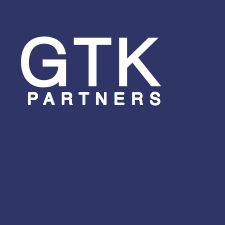Everybody Hates Tesla: disrupting profit share, supply chain & channels. Self-driving, not so much.
Part 2: EV and Tesla impact on supply chain, channels and self-drivinG
EV adoption will threaten automotive profit distribution sooner than expected and much sooner than unit volumes would imply. EVs and especially Tesla are bringing about large but less-noticed changes to the supply chain and dealerships.
Threats and insults to the supply chain.
EVs are a problem for the automotive supply chain. In a gas vehicle, complex mechanical and electronic systems carry fuel and air to the engine, burn it, mechanically transfer piston motion to the wheels, and exhaust the heat and fumes. In an EV, wires connect the battery pack to motors proximate to the wheels, and there’s no exhaust. There is plenty of room for growth in certain EV components and auto electronics, and many forward-thinking auto suppliers are rapidly growing their related capabilities, including Plug & Play Mobility's corporate partners (such as Bosch, BorgWarner, Denso and ZF). Overall, however, at this point EV share growth is a net loss to — and substantially discontinuous with the skills of — the massive auto supply industry, which employs millions.
Tesla is a specific threat to the supply chain and therefore itself. A number of us at GTK were treated to a SpaceX tour, Elon Musk’s space launch company, and we were struck by the aggressive in-sourcing. Tesla is on the same path. In addition to building its own batteries, Tesla is also departing from automotive norms by developing seats, robots, cameras and semiconductor chips. Look at the featureless dashboard of the Model 3, and what you’re seeing are downstream suppliers losing out. Given this Tesla-specific threat, it’s not hard to imagine suppliers acting to help traditional OEMs beat Tesla in EVs.
It’s not cricket. Especially for a company with imperfect reliability, while understandable for a new entrant, Tesla’s habit of publicly blaming suppliers for airbag, door and manufacturing problems builds resentment. One more reason for Tesla investors to be concerned about supply chain risk to the Company.
Dealerships & software upgrades.
Circumventing 1.1 million jobs. Your legislator demands you buy your car from a dealership independent of whoever made the car. It’s true: all 50 states have franchise laws that at a minimum prohibit direct-to-consumer sales of new vehicles from a car lot. Like successful iconoclasts before it (PayPal, Uber, Airbnb), Tesla is challenging this legacy by operating in a legal grey area: it has “showrooms” — not “dealerships” — which demonstrate models but relegate the actual purchase to an in-store computer and carry no inventory. In parallel, the Company is fighting state-by-state legal battles with mixed results. In Calfornia, Tesla has free reign. In New Jersey, it’s allowed four dealerships, and in Michigan not even a service center. By achieving reasonable scale with this approach, Tesla is threatening the decades-old channel structure of the new-vehicle industry, which employs 1.1 million. It's easy to see how other auto OEMs, especially smaller or niche-oriented brands, may choose to follow this same path.
Potentially years ahead in alternative transport models. The demarcation between OEMs and consumers brought about by dealerships means OEMs were never in the mindset of directly accessing the vehicle. For example, before Tesla no one upgraded vehicle software Over The Air (“OTA”), a commonplace occurrence in all manner of consumer devices. In fact, agreements between OEMs and their dealer network often prohibit this “end-run” of the dealership. Tier 1 supplier Delphi explains here. Tesla’s ability to OTA almost every vehicle function is many, many years ahead of others, potentially making it the vehicle of choice for delivering alternate transportation models.
Last, and so far least, self-driving.
An unnecessary complication. So far we’ve argued that EV's and especially Tesla’s influence is under-appreciated. We have the opposite view on Tesla’s AutoPilot “self-driving” and think Tesla’s urge to make AutoPilot magical as unnecessary: Tesla is groundbreaking regardless.
Tesla’s Autopilot functionality isn’t that differentiated, and was operational about a year after vehicles with steering assist were introduced by Mercedes. Tesla’s competition seriously questions the way Tesla evangelized the technology, and considers the very name “AutoPilot” as engendering driver complacency and contributing to sometimes fatal accidents. Also, AutoPilot was introduced with fewer safeguards than, for example, Mercedes’ system which demands regular driver input, but then backtracked to include similar safeguards. Any other large OEM would have suffered much greater scrutiny for the same fact pattern.
Some potential for a spectacular achievement. Tesla includes the AutoPilot hardware regardless of whether the option is selected, and therefore collects driving data on a scale no other OEM can match. Tesla’s data collection is an enormous advantage since autonomous driving systems are desperate for data on human driving behavior. If this data advantage allows Tesla’s camera-centric approach to achieve high levels of autonomy — and there are universal eye-rolls about this — it will be a spectacular breakthrough: all other OEMs are betting on LIDAR, which remains prohibitively expensive from a cost and form-factor perspective for passenger vehicles.
Unlike Tesla, traditional OEMs are too margin-sensitive to include hardware for which they are not paid solely to collect data. One work-around is for more forgiving financial markets to subsidize hardware deployment. Auto vision startup Nauto recently raised $159MM from venture capitalists to do just this for OEMs.
Conclusion and next steps. An inflection point in any one of how cars are powered, produced, sold, or driven would count as a once-in-many-decades event. That all are either happening or being attempted concurrently is astonishing, and that a single company, and one of the newest, has a role in all of them is almost not believable. In future publications, we’ll discuss specific investment opportunities. For now, we hope we’ve provoked your thinking and provided you a foundation to reach conclusions specific to your interests.

